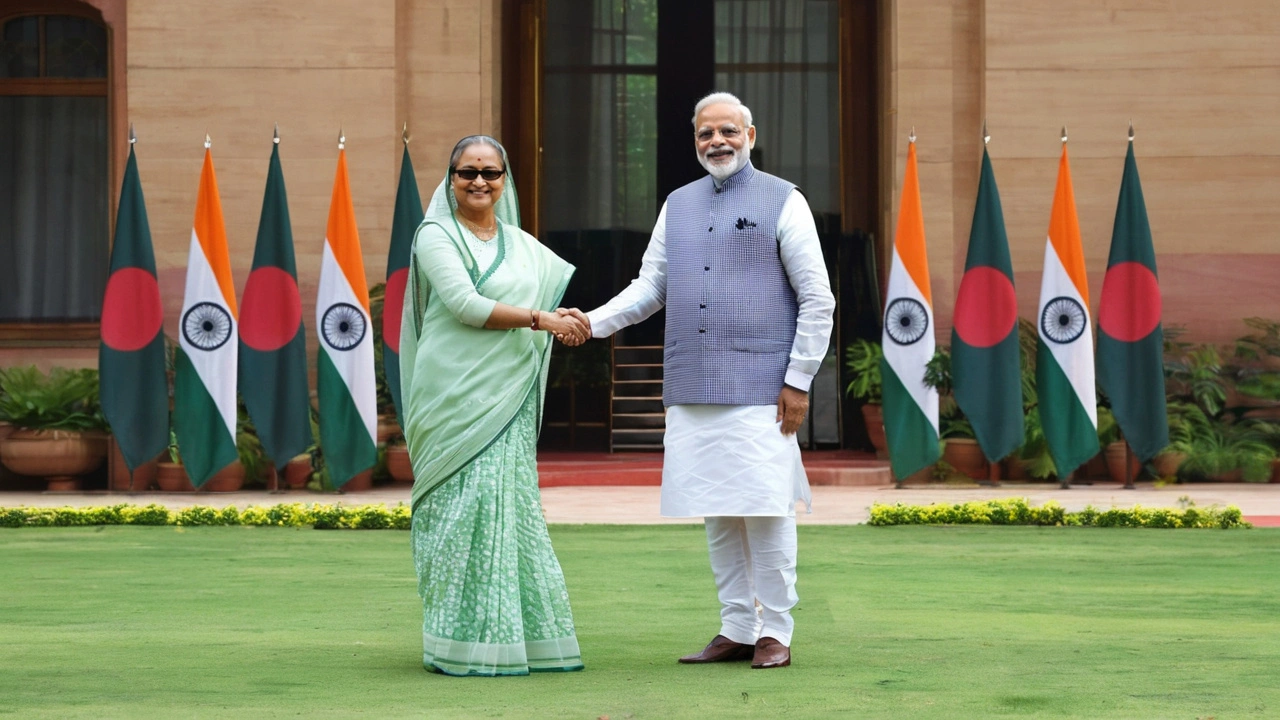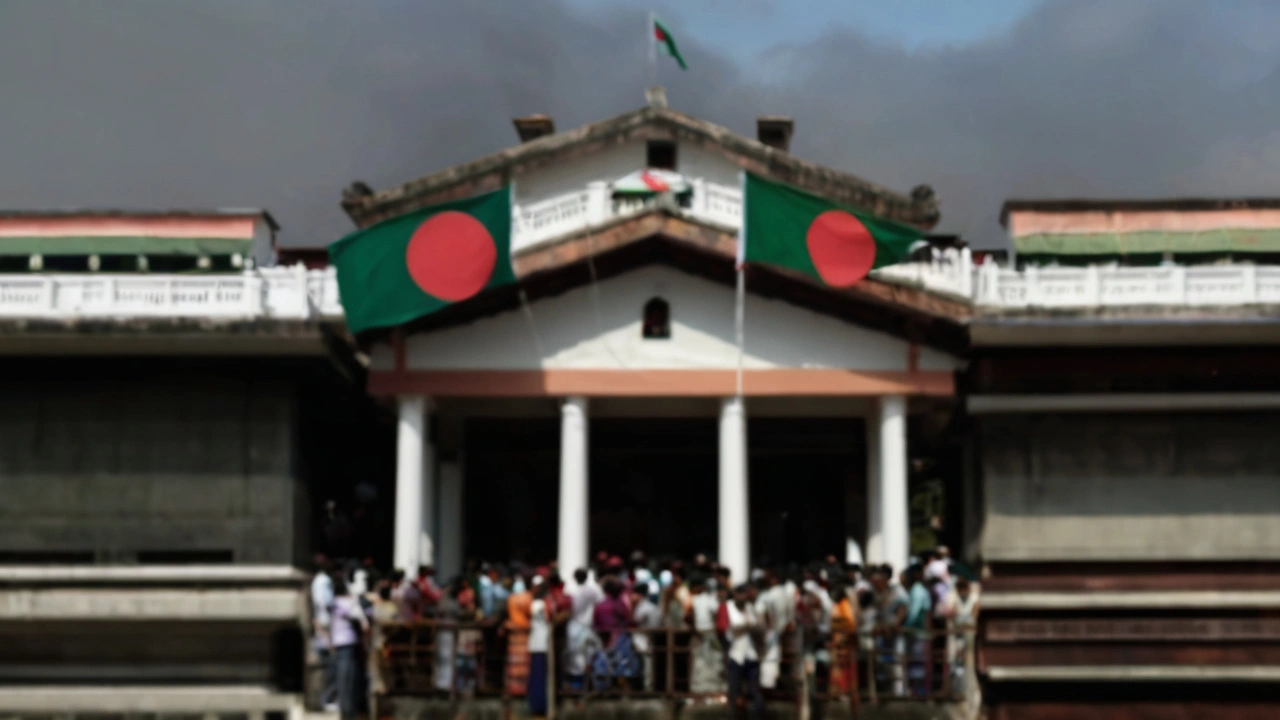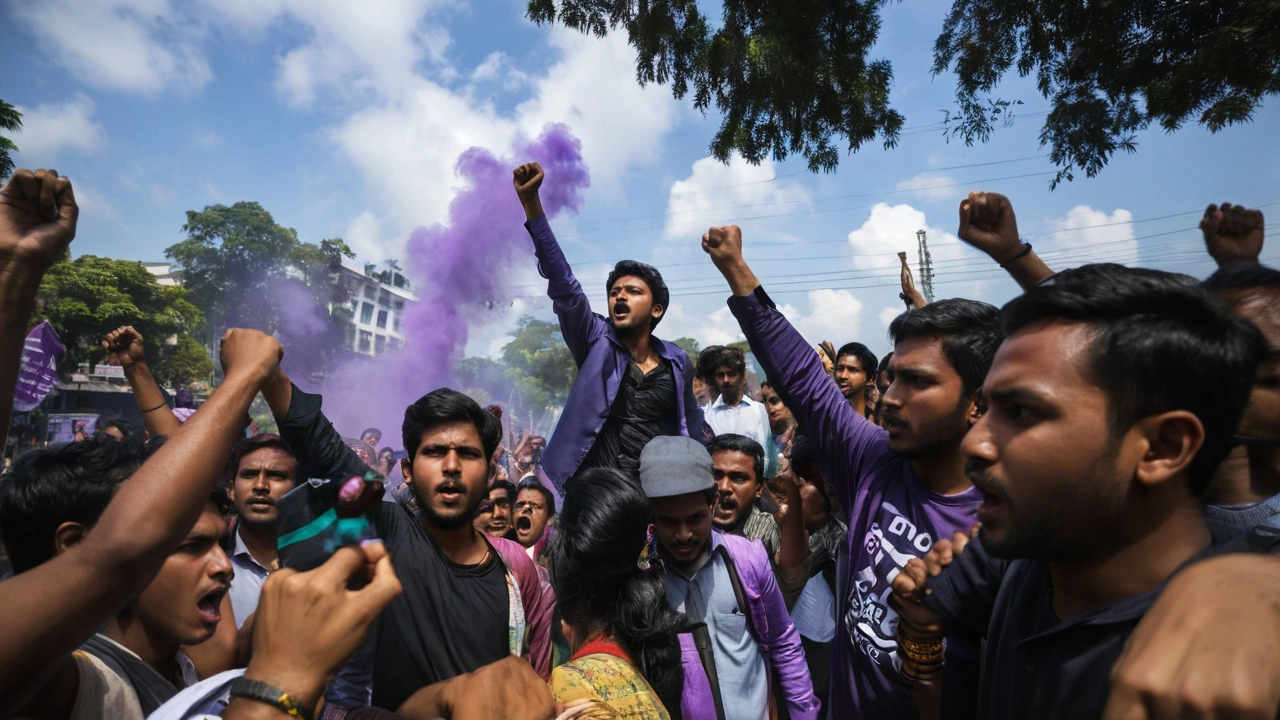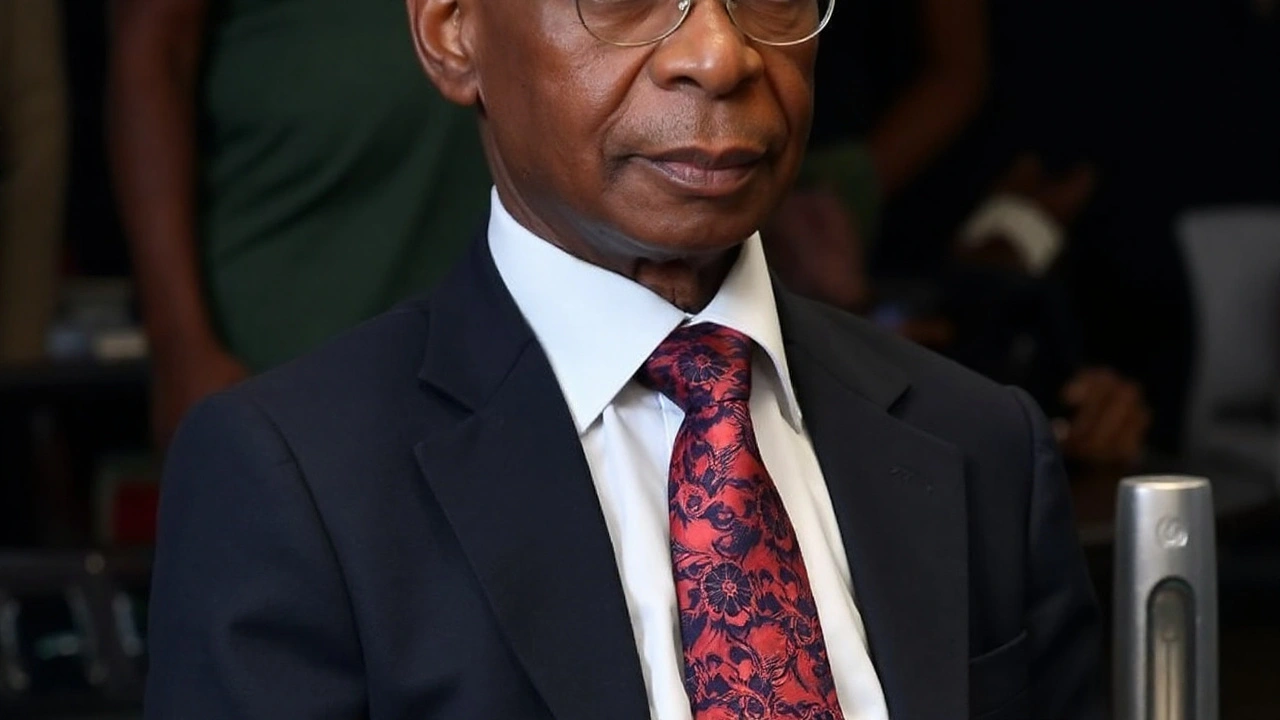
Introduction
In recent weeks, Bangladesh has witnessed a dramatic series of events that have led to widespread unrest, violent clashes, and significant political repercussions. At the heart of this turmoil lies a combination of high youth unemployment and a controversial job quota system, which has provoked a passionate response from the country's young population. This article delves into the causes, developments, and implications of this crisis, tracing how it all culminated in the resignation of Prime Minister Sheikh Hasina.
The Root of the Unrest: Youth Unemployment
One of the primary the catalysts for the recent unrest in Bangladesh is the country's persistent challenge of high youth unemployment. With a large portion of the population under the age of 30, the demand for employment opportunities far outstrips supply. Young graduates entering the job market find themselves in a highly competitive environment with few opportunities, resulting in widespread frustration and disillusionment. This dissatisfaction has been festering for years, and the lack of meaningful government intervention has only exacerbated the problem.
The Controversial Job Quota System
Adding fuel to the fire is the job quota system in Bangladesh, a policy that has become a lightning rod for discontent. Under this system, 30% of government jobs are reserved for the families of veterans from the 1971 war of independence. While the intention behind the system was to honor those who fought for the country's freedom, it has led to significant backlash. Critics argue that this quota is outdated and unfairly disadvantages the majority of job-seekers, who are not eligible for these reserved positions. Students, in particular, have been vocal in their opposition, labeling the quota system as discriminatory and calling for a merit-based approach to job allocation.

The Protests Erupt
The sense of injustice and frustration finally boiled over on July 1, when students across the nation took to the streets in protest. The demonstrations, initially peaceful, soon escalated into violent clashes as students clashed with pro-government supporters and armed police. The violence resulted in numerous casualties, highlighting the severity of the situation. The sight of young people, who represent the future of the nation, being met with brute force was a stark illustration of the government's inability to address their concerns constructively.
The Government's Response
The initial response from Prime Minister Sheikh Hasina's government was one of denial and deflection. Instead of engaging with the protesters' demands, the government opted for a heavy-handed approach, deploying police forces to disperse the crowds. This only served to further inflame tensions, and the ensuing clashes resulted in significant injuries and even fatalities. The government's handling of the protests drew widespread criticism both domestically and internationally, with many observers condemning the use of violence against peaceful demonstrators.
The Supreme Court of Bangladesh intervened by suspending the job quota system for a month, a move aimed at calming the situation and providing a temporary reprieve. However, this measure was seen by many as a mere stopgap solution, insufficient to address the underlying issues. The legal battle over the job quotas continues, with no clear resolution in sight. Meanwhile, the unrest has exposed deep-seated divisions within Bangladeshi society and highlighted the urgent need for comprehensive reforms.
The Political Fallout
The crisis reached a boiling point when Prime Minister Sheikh Hasina announced her resignation and fled the country. Her departure marked a dramatic turning point in the political landscape of Bangladesh, underscoring the profound impact of the protests. The resignation of a sitting prime minister is a rare occurrence and signifies the gravity of the situation. It also raises questions about the future direction of the country's leadership and governance.
In the wake of Sheikh Hasina's resignation, there is a growing consensus that Bangladesh needs to address the root causes of the unrest. This includes tackling youth unemployment head-on, reforming the job allocation system, and ensuring that the voices of the young population are heard and their needs met. It is evident that the status quo is no longer tenable, and meaningful change is imperative for the stability and progress of the nation.
The Way Forward
The path to recovery for Bangladesh will not be easy. The country must embark on a journey of comprehensive reforms that address both the immediate and long-term needs of its citizens. Key among these reforms is the creation of more job opportunities for the youth, ensuring that the education system is aligned with market needs, and fostering an environment where innovation and entrepreneurship can thrive. Additionally, the government needs to build trust with the young population by engaging with them in meaningful dialogue and involving them in the decision-making process.
Reforming the job quota system will be a critical step in this direction. A merit-based system, where job applicants are evaluated on their qualifications and skills rather than their family background, will help to restore faith in the fairness and transparency of the employment process. This change will not only benefit the youth but also contribute to a more efficient and productive public sector.

Conclusion
The recent events in Bangladesh serve as a stark reminder of the power of youth and the importance of addressing their concerns. The protests, fuelled by high unemployment and a controversial job quota system, have led to a significant political upheaval, culminating in the resignation of Prime Minister Sheikh Hasina. The path ahead will require bold and inclusive reforms to address the underlying issues and pave the way for a more equitable and prosperous future for all Bangladeshis.






gaganpreet singh
August 6, 2024 AT 02:51It is a moral imperative that any society which claims to value its independence must first confront the systemic neglect of its own youth, for a nation bereft of opportunities for its graduates is a nation adrift in despair.
When the job quota system was conceived, its noble intention was to honor the sacrifices of those who fought for freedom, yet the continued enforcement of a thirty percent reservation in public employment disproportionately sidelines an ever‑growing demographic of young professionals.
The resulting frustration is not merely an economic grievance but a profound ethical failure that betrays the very principles of fairness and meritocracy.
You cannot expect the vitality of a country to flourish while the majority of its energetic, educated citizens are forced to wait in endless queues for a chance that is effectively denied by antiquated policy.
Moreover, the government's heavy‑handed response to peaceful protest only compounds the moral outrage, demonstrating a chilling disconnect between rhetoric and action.
Instead of deploying police forces to disperse demonstrators, the state should have opened a constructive dialogue, acknowledging the legitimate concerns raised by the students.
Such a dialogue would have signaled respect for democratic participation, reinforcing the social contract that binds ruler and ruled.
But the refusal to engage, coupled with a reliance on force, casts a shadow over the country's commitment to the very freedoms it once fought to secure.
In light of this, the resignation of Prime Minister Sheikh Hasina, while dramatic, is a predictable consequence of an administration that consistently ignored the pleas of its younger citizens.
The resignation should serve as a stark reminder that political legitimacy derives from responsiveness, not from the inertia of entrenched power structures.
Future policymakers must prioritize the creation of sustainable employment opportunities, aligning educational curricula with market demands and fostering entrepreneurial ecosystems that can absorb surplus labor.
Eliminating or reforming the job quota system to reflect contemporary socioeconomic realities is essential; merit‑based selection must become the cornerstone of public sector hiring.
Failure to do so will perpetuate a cycle of disillusionment, whereby each new generation inherits the same sense of hopelessness that fuels unrest.
The international community, observing these developments, must encourage Bangladesh to adopt transparent, inclusive reforms that empower its youth rather than marginalize them.
Only through sincere, equitable policy adjustments can the nation hope to restore confidence, sustain its democratic ideals, and ensure that the sacrifices of the past are honored by a thriving, just future.
Urmil Pathak
August 10, 2024 AT 23:31Bangladesh needs more jobs for young people and the old quota system makes it harder for them to get work.
Neha Godambe
August 15, 2024 AT 20:11It is absolutely intolerable that a government would continue a quota that blatantly disadvantages the majority of its citizens while claiming to uphold fairness; the youth demand a merit‑based system, and they will not be silenced.
rupesh kantaria
August 20, 2024 AT 16:51This is a truely tragic scenareo where the policy, though well‑intendeed, has becomed an albatross on the shoulders of the younger genration; the nation mus t reconsider its approach to public employment and seek a more rational framework.
Nathan Tuon
August 25, 2024 AT 13:31We can turn this crisis into an opportunity by investing in skill‑building programs and encouraging youth‑led startups; together, we can create a future where every graduate finds purpose and work.
shivam Agarwal
August 30, 2024 AT 10:11The emotions running through the streets of Bangladesh right now are a clear signal that policy must evolve; respecting the voices of young people while balancing historical honors is a delicate task, but it is one we can achieve through inclusive dialogue.
MD Imran Ansari
September 4, 2024 AT 06:51Wow, what a whirlwind! 🌪️ The protests show the power of youth, and the government should listen – more jobs, less quotas! 🚀💡
walaal sanjay
September 9, 2024 AT 03:31Bangladesh must stand strong!; The young are right to protest; The quota is outdated; The government must act now; No more excuses!!!
Umesh Nair
September 14, 2024 AT 00:11yeah sure, blame the quotas but dont forget the whole system is rigged from the sratrt, its all a big game of who can shout louder.
kishore varma
September 18, 2024 AT 20:51Looks like a massive wake‑up call 📢; hope the leaders finally hear the youth and drop the old quotas 🙏.
Kashish Narula
September 23, 2024 AT 17:31It is commendable how the protestors highlighted the need for change; however, a balanced approach is essential, and any reform must consider both historical respect and contemporary fairness.
smaily PAtel
September 28, 2024 AT 14:11The unemployment rate among youth in Bangladesh has surged to over 15 percent, the quota system reserves thirty percent of civil service positions for veteran families, the Supreme Court temporarily suspended the quota, and the Prime Minister’s resignation marks an unprecedented political shift.
Hemanth NM
October 3, 2024 AT 10:51Reform the quota now.
rin amr
October 8, 2024 AT 07:31While the conciseness of the preceding statement captures the urgency of reform, one must also appreciate the nuanced interplay of socioeconomic variables, historical obligations, and the imperatives of a meritocratic framework; thus, a comprehensive policy overhaul is not merely advisable but indispensable.
Jai Bhole
October 13, 2024 AT 02:51Listen, the nation’s soul is at stake; any talk of “nuance” is just a veil for cowardice – we must smash the outdated quotas and let true patriots emerge, unshackled by bureaucratic chains.